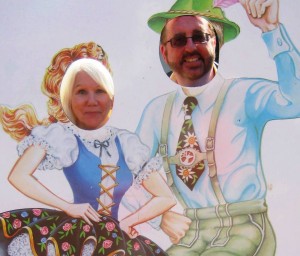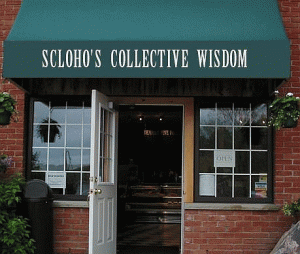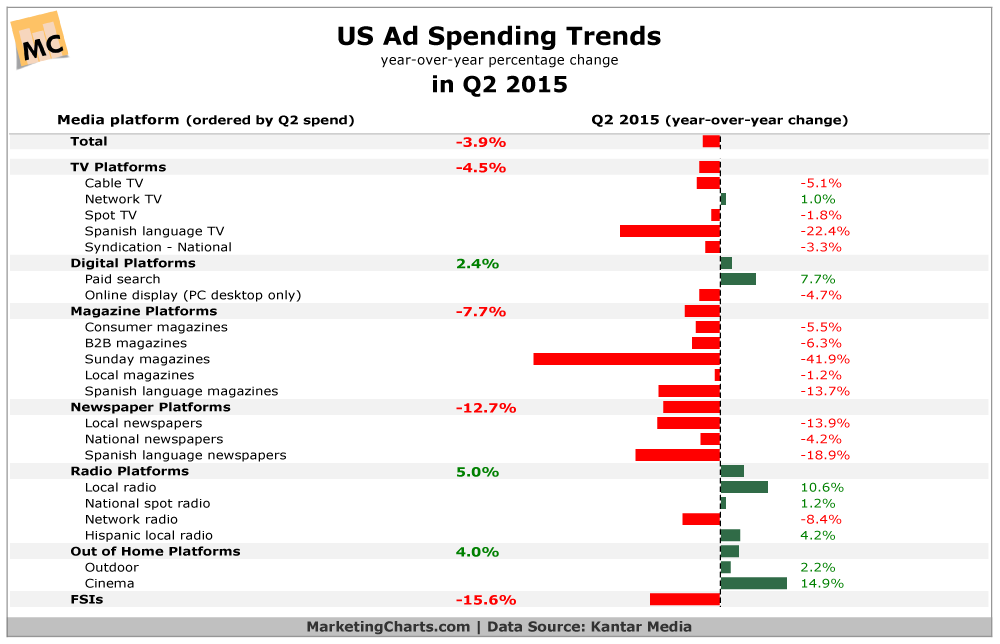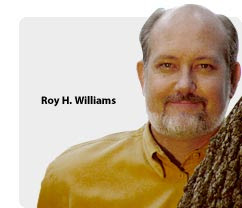by Scott Howard | Oct 30, 2015 | Marketing and Advertising Insights, ScLoHo's Collective Wisdom, WOWO Fort Wayne Radio Advertising with Scott Howard
Over the weekend, I was catching up on my email inbox and discovered this article about Baby Boomers from Mediapost.
Over half the audience to my radio station, WOWO radio is age 50 and older, nearly 80,000 weekly listeners. Number two according to the rating survey is WLDE with less than half that amount. Here’s why you as a business owner or marketing manager should care:
10 Key Facts Savvy Marketers Know About Boomers
Driving revenue in today’s ultra-competitive marketing landscape requires clear-thinking and objective decision-making. Chasing Millennials has proven to have limited payoff because that generation continues to have limited financial means. On the contrary, the case for Boomers and older consumers as the lifeblood of the American economy continues to grow. According to the U.S. Census, Americans 50+ now spend more on consumer products and services than those under 50.
Here are 10 more key facts making the case for Boomers as the most valuable generation for marketers today:
1. 50+ spend more per capita. People 50+ are responsible for 51% of all consumer spending. They represent just 45% of all adults, so we know they spend more per capita than younger adults—so much for the notion that spending slows down after age 50.

Boomers know how to have fun!
2. 50+ spend more across a variety of mainstream segments.That people 50+ spend more on healthcare than younger consumers is no surprise, but they are also responsible for a greater share of spending on new cars and trucks (57%), personal care products and services (53%), household furnishings and equipment (52%), and entertainment (51%).
3. 50+ spend more than Millennials and Gen X. People 50+ spent 3.3 trillion on consumer goods and services in 2014—that’s $200 million more than was spent by people under age 50.
4. 50+ were critical in lifting us out of the recession. Since the recession, consumer spending among people 50+ has increased $726 billion, while spending among people under age 50 has dropped by $238 billion, a clear indication the 50+ age group ushered us out of the recession and is keeping our economy stronger now.
5. 50+ continues to be a rapidly growing population. Over the next ten years, the 50+ population will grow by 15.2 million — nearly 3 times the rate of the 18-49 population, ensuring that the 50+ consumer will only become increasingly relevant across most product and service categories.
6. 50+ have a higher net worth. The median net worth of people 50+ is $304,000, which is 75% greater than it is for people age 18-49, $174,000.
7. 50+ own a majority of all investments. People 50+ own over 60% of all investments, including 68% of mutual funds, 70% of stocks, 76% of money market funds, and 89% of annuities.
8. 50+ support brick-and-mortar businesses. Over the past 3 years, 50+ have been kept a broad range of brick and mortar retailers in growth mode. During that period, Walmart gained 5.7 million more customers age 50+, 8 times the growth (700,000) of their 18-49 customer base. Other big brands garnered significant increases in 50+ customers, while watching their 18-49 customer bases drop, including: Home Depot (up 2.6 million 50+, down 2.1 million 18-49), McDonald’s (up 2.4 age 50+, down 7.6 million age 18-49), and Kohl’s (up 1.9 million 50+, down 1.9 million 18-49).
9. 50+ are avid online shoppers. Outside of using email, making purchases is the #1 online activity among people 50+. Much of this is happening on mobile devices. Half of all people 50+ now own smartphones, with double-digit growth over the past 2 years occurring among people 50-59 (+52%), 60-69 (+92%), and 70+ (+127%).
10. 50 will soon be the age of the average American. The average age of American adults is now 47, just 3 years shy of the age at which they will age out of the coveted 18-49 demo. By 2025, the average age of the American adult will be 50.
Due to our culture’s obsession with youth, Boomers will continue to cede the media spotlight to Millennials, but it will be a long time before they give up their spot as our nation’s dominant consumer group. Savvy marketers will prioritize evidence, not popularity, when deciding the best way to deliver profits and grow share of market.
by Scott Howard | Oct 21, 2015 | Marketing and Advertising Insights, ScLoHo's Collective Wisdom, WOWO Fort Wayne Radio Advertising with Scott Howard
I see so many businesses that are missing out on making money.
Lots and lots of money. What are they doing? 
Ignoring the Baby Boomers and not inviting them to spend their money with them. But don’t take my word for it. Read this from Mediapost:
Boomers Control $14 Trillion, Essential To Growing A Business
Baby boomers are the only demographic that has gotten wealthier over the last 10 years, while Gen Xers and Millennials have seen their net worth decline or in some cases disappear, often buried under a pile of student loans. Marketers devote a lot of energy to Gen X and Millennials, but baby boomers and senior citizens represent an untapped opportunity. Recent census data indicates that people aged 55+ represent 26% of the U.S. population and a whopping 66% of the country’s net worth, or $14 trillion.
Even the meaning of “senior citizen” has changed dramatically as life expectancy continues to grow, and rock stars like Mick Jagger (72), Bob Dylan (74) and Bruce Springsteen (66) continue to write songs and hit the road. Today’s boomers and seniors are no longer constrained by the social norms they helped upend in the 1960s and 1970s. They act like young adults, taking part in education, sports and leisure, entrepreneurship, non-profits, and they bring maturity and experience to the marketplace to boot.
The implications are huge for marketers in the U.S. and Europe:
1. The 55+ population has by far the most financial power and it’s essential to count them in. Younger generations may be trendsetters, but they do not have anywhere near their parents’ resources and financial freedom. To substantially grow their business, brands must target both the trendsetters and the mass market, which means people over 55.
2. Market research should be targeted at boomers and seniors, rather than merely on the young or middle-aged. Buying behaviors and expectations have changed significantly in the past decade, particularly among 55+ consumers. It is critical to get past stereotypes and clichés to understand precisely how they have changed so that marketers don’t miss prime opportunities.
3. Boomers and seniors can be excellent partners in market research because they are demanding and focus on essentials. Marketing gimmicks or fashion statements are not sufficient to get their buy-in. Boomers and seniors challenge companies to rethink products and services in radical ways, because they demand real vs. cosmetic innovation. These populations might appear more conservative when they are simply more discerning.
The takeaway: Baby boomers are not fading into the sunset, and they’re bored by an endless stream of ads for Viagra, Florida condominiums and Caribbean cruise ships. Market research that is inspired will focus on this powerful force in the economy for the next decade and beyond. Or as long as the Boss keeps rocking, and the Stones keep rolling.
At WOWO Radio, we have the largest radio audience filled with Baby Boomers in Fort Wayne. Contact me and let’s talk about how to invite them to spend their money with you.
by Scott Howard | Sep 29, 2015 | Marketing and Advertising Insights, ScLoHo's Collective Wisdom
I saw this chart last week that recaps which advertising mediums are growing and which are hurting. Radio and Digital media, the two areas I work in are doing pretty good according to this data:

Local radio, which is what I do with WOWO grew over 10% nationally. Meanwhile Print in the form of Free Standing Inserts, Newspapers and Magazines; and TV is in decline. I’m not surprised, are you?
by Scott Howard | Aug 27, 2015 | Marketing and Advertising Insights, ScLoHo's Collective Wisdom
 Earlier this month I decided to take a week off from writing fresh articles. Some people would simply not publish and be silent. I dug through my ScLoHo archives from 2008 and found a few worth updating and sharing like this from Roy Williams.
Earlier this month I decided to take a week off from writing fresh articles. Some people would simply not publish and be silent. I dug through my ScLoHo archives from 2008 and found a few worth updating and sharing like this from Roy Williams.
Along with his books he also writes a weekly Monday Morning Memo that you can get free.
Here’s an excerpt from this weeks issue:
Dealing with Rejection
Advertising salespeople are highly paid because rejection hurts. They told me to rub Zig Ziglar on it, but the sting and the ache stayed with me. I was 20 years old.
The smiley seminar speaker said, “Look in the mirror each morning and repeat these affirmations.”
Sorry, I’ve already got a religion and it makes me very uncomfortable with self-worship. I know there’s a God and it isn’t me.
My manager tried to teach me how to overcome objections but that only made me feel worse. People were rejecting me because they assumed I was a professional liar and now I was becoming one.
Everywhere I went I heard, “I tried advertising and it didn’t work.”
“Yeah, I know,” whispered the little voice inside me, “I see it not work every day.”
You would have fired me by now, right? I would have fired me, too. But Dennis Worden saw a spark in me that he believed he could fan into a flame. Lucky for both of us, he was right.
My career found wings the day I encountered an advertiser who had a message worth hearing. I delivered his message to my little audience and his business exploded. No question about it, my tiny audience was making him rich. Now I had a success story to tell my prospects. But a success story is a doubled-edged sword. Filled with names and dates and details and numbers, success stories cut through the doubt and make prospects say yes. But the second edge – the one that cuts the seller – is the implied promise, “The same thing will happen to you.”
But if that advertiser’s message is weak, you’ll soon be hearing, “I bought what you said and it didn’t work.” I had been groping blindly in a pitch-dark room when I flicked the light switch on the wall. Suddenly everything was clear: Message and copy are two different things.
“The fish trap exists because of the fish. Once you’ve gotten the fish you can forget the trap. The rabbit snare exists because of the rabbit. Once you’ve gotten the rabbit, you can forget the snare. Words exist because of meaning. Once you’ve gotten the meaning, you can forget the words.” – Chuang-tzu, 350 BC
If Chuang-tzu had been in advertising, he would have said, “Copy exists because of message. Once you’ve gotten the message, you can forget the copy.”
That first successful client owned an auto body shop. He had an invisible location but a powerful message that had never been told. I was merely the guy who uncovered his shiny message and held it up in the light. That was 30 years ago, but I can still tell you the essence of Danny’s message:
1. No one ever plans to have a traffic accident.
2. You don’t really have to get 3 estimates from 3 different body shops.
3. You don’t even have to pay your $250 or $500 deductible.
4. Your insurance company will happily pay whatever their adjustor says is the right amount.
5. When you’ve been involved in a traffic accident, call me.
6. I’ll send out a wrecker to pick up you and your car.
7. I’ll give you a free loaner car to drive while I’m repairing your car.
8. I’ll notify your insurance company and meet with the adjustor.
9. I’ll fix your car for whatever amount the insurance adjustor agrees to pay.
10. You don’t even have to pay your deductible.
11. And since we’ve already got the paint in the gun, we’ll fix those little door dings and scratches on the other side of the car that were there before the accident. No extra charge.
12. You’ll get back a car that’s better than it was before the accident.
You don’t have to be a good copywriter to create a great ad from that message. You just have to make sure the advertiser understands:
1. They need to stay on the air long enough for people to hear them and remember their message. That’s when they’ll begin to see results.
2. Then they have to wait for the listener to need them.
3. The longer they stay on the air, the deeper the message goes into memory and the better it works.
I’ve never seen an advertiser fail because they were reaching the wrong people but I’ve seen thousands fail because they had a weak message. We create failure when we assume creative copy will compensate for the fact that an advertiser has nothing to say.
Are there exceptions to what I’ve told you? Of course.
1. The advertiser with a weak message, often repeated, will prevail over a competitor with an equally weak message less often heard. When weak vs. weak, frequency is a tiebreaker.
2. The advertiser with a weak message wrapped in cleverness and humor will prevail over a competitor with an equally weak message wrapped in a brown paper bag.
3. The advertiser with a weak message and a big ad budget will prevail over a competitor with a strong message that never gets heard.
I made my fortune searching out little businesses with strong messages that had never been heard. Everyone thought I was a great copywriter, but they were wrong. I was a great message-finder.
When I finally wrapped my head around the fact that success wasn’t determined by the “rightness” of my audience, the loyalty of my audience, the size of my audience or the cleverness of my copy, I began to sell everyone I met. I knew all I had to do was dig until I found a message worth sharing. And if the advertiser didn’t have a message worth telling, I had to convince them to create one or prepare them for a life of mediocrity.
What I said to them made sense. My prospects were sold on me long before I was sold on them.
I knew I could grow the business if the business owner would only let me. When prospects didn’t want to meet with me, I no longer felt rejection. I felt pity for them. And if they were so unfortunate as to hurt my feelings I would track down their smallest competitor and make that competitor their worst nightmare.
People say I have a big ego. But in truth I’m shy and easily wounded. I learned how to make advertising work because I was unable to face my clients when it didn’t.
And now you know.
Roy H. Williams
by Scott Howard | Aug 26, 2015 | Marketing and Advertising Insights, ScLoHo's Collective Wisdom
My how things have changed but stayed the same too.
I’ve pulled another article from the ScLoHo 2008 archives. This was just before the 2008 Republican Convention. We now have the hindsight to see what happened.
Some thoughts from Laura Ries:

This Presidential race has stacked up to be a true test of branding might.
McCain/Maverick vs. Obama/Change.
Both parties have found their footing and have refocused their campaigns and their message. It will be a true test of two brands that are now totally focused.
What each has to do now is dig in deep on their position, their word and their message.
The Democrats put on an excellent convention that stayed on-message and on-course. As the party out of power in DC, they have a tremendous advantage in being able to claim change as their theme. The power of one word, one sign, one message was evident at the convention this week. The Clinton’s were not easily beat, but with one word (Change) a relatively unknown guy took them down.
What the Republicans need to do most at their convention next week is to showcase one word, one sign, one look. It is not about being better than the Democrats (nobody could put on a better show than Obama did Thursday night) it is about being different in a clear and focused way.
The difficulity in politics is that you need 51% of the vote to win, trying to appeal too broadly is a temptation. But in the end, the winner is the candidate that can attach himself or herself to a powerful idea in the mind.
My biggest concern for McCain is this: What will the signs say and will they all be the same. If McCain nails that, then this could be a race to remember and he might even win.
by Scott Howard | Aug 25, 2015 | Marketing and Advertising Insights, ScLoHo's Collective Wisdom
From the ScLoHo 2008 archives:
From the Business Turn Around site:
 Providing a good customer experience isn’t always about what you add to your business. Sometimes it’s about what you take away – like the potential for a customer’s embarrassment.
Providing a good customer experience isn’t always about what you add to your business. Sometimes it’s about what you take away – like the potential for a customer’s embarrassment.
Meet “Abby” in the photo to the left. While shopping …
with Abby at our neighborhood pet store, Frances saw these cleanup stations at the end of several aisles, as well as one at the entrance.
Are there potentially embarrassing moments for your customers in your business? Breakables displayed too low so that a customer’s jacket can brush them off into the floor. Extension cords across the floor that could trip up a customer. No paper in the washroom.
Inviting pet owners to bring their pets into the store is also an invitation for an accident. Petco knows that. But, when it happens to your pet, it’s still embarrassing. Petco tries to minimize that embarrassment by making it as easy as possible for the customer to clean it up.
 Providing a good customer experience isn’t always about what you add to your business. Sometimes it’s about what you take away – like the potential for a customer’s embarrassment.
Providing a good customer experience isn’t always about what you add to your business. Sometimes it’s about what you take away – like the potential for a customer’s embarrassment.



